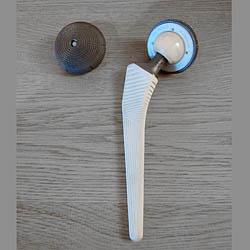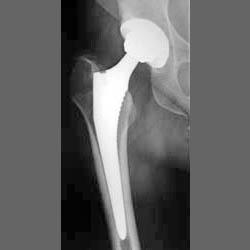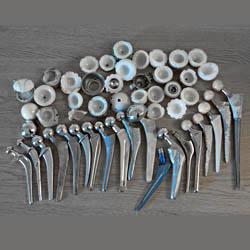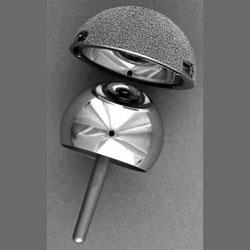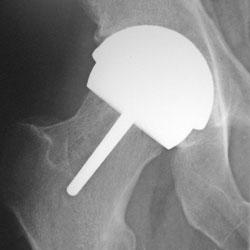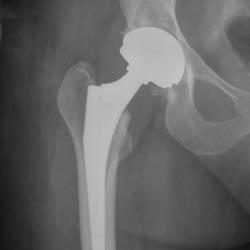The hip replacement
Classic Total Hip Replacement
What is a classic total hip replacement
A hip prosthesis is a high-tech "ball in socket", which consists of a stem with ball on the one hand and a pan with plastic, ceramic or metal element on the other hand. These elements exist in different sizes, with a large number of combination possibilities. Each patient thus gets his own "customized" prosthesis.
The titanium metal pan is clamped in the pelvis. The high-quality plastic, ceramic or metal is clicked into the plastic pan.
The metal stem is placed in the medulla canal of the femur. A spherical head made of metal or ceramic fits on top of the stem.
Are there different types of hip prostheses?
Of course. It is up to the surgeon to decide for each patient individually which prosthesis fits best. Measurements and dimensions are carefully drawn on the radiographs. The right kind of prosthesis is partly determined by the anatomy and shape of the hip joint. Smooth-polished ceramic heads are preferred over metal heads.
Use of cement or not?
The pan in titanium is usually easily clamped in the pelvis without cement. The stem is wedged in the femur, with or without cement. The choice is determined by the shape and the firmness of the femur of the patient. Both methods - with or without cement - are equivalent.
Resurfacing hip prosthesis
What is a resurfacing hip prosthesis ?
In contrast to the classic hip replacement, the femoral head is no longer removed: only the cartilage is removed. The metal artificial head is placed over the real hip head. The metal hip-pan is anchored in the pelvis as in a classic hip prosthesis.
What are the benefits of this method ?
- It is a "conservative" prosthesis with retention of the femoral head.
- This prosthesis is especially suitable for younger, active persons.
- The active lifestyle can be maintained.
- Rehabilitation is progressing more smoothly.
What are the disadvantages ?
- The incision and the scar are longer (± 25 cm)
- Not everyone is eligible
- There are specific complications associated with such type of prosthesis (neck fracture)
- The results are less predictable with a resurfacing prosthesis.
- The long-term results (more than 10 years) are hopeful, but until now unknown.
What is the best prosthesis ?
The classic total hip prosthesis (stem-head-pan) remains our preferred option for most patients with hip disorders who need a hip replacement. Recent studies have shown that the results with the high-quality plastic in the pan and a ceramic head give the best results with the smallest risks of side effects.
The resurfacing prosthesis is indicated in young, active people with a painfully affected hip joint where the head is not too distorted and the quality of the bone is normal. Because the anatomy of the hip can not always be perfectly reconstructed with a resurfacing prosthesis, the placement of a prosthesis with stem remains appropriate for many younger patients. In those cases it remains possible to use a large diameter head which gives great stability in extreme movements.

